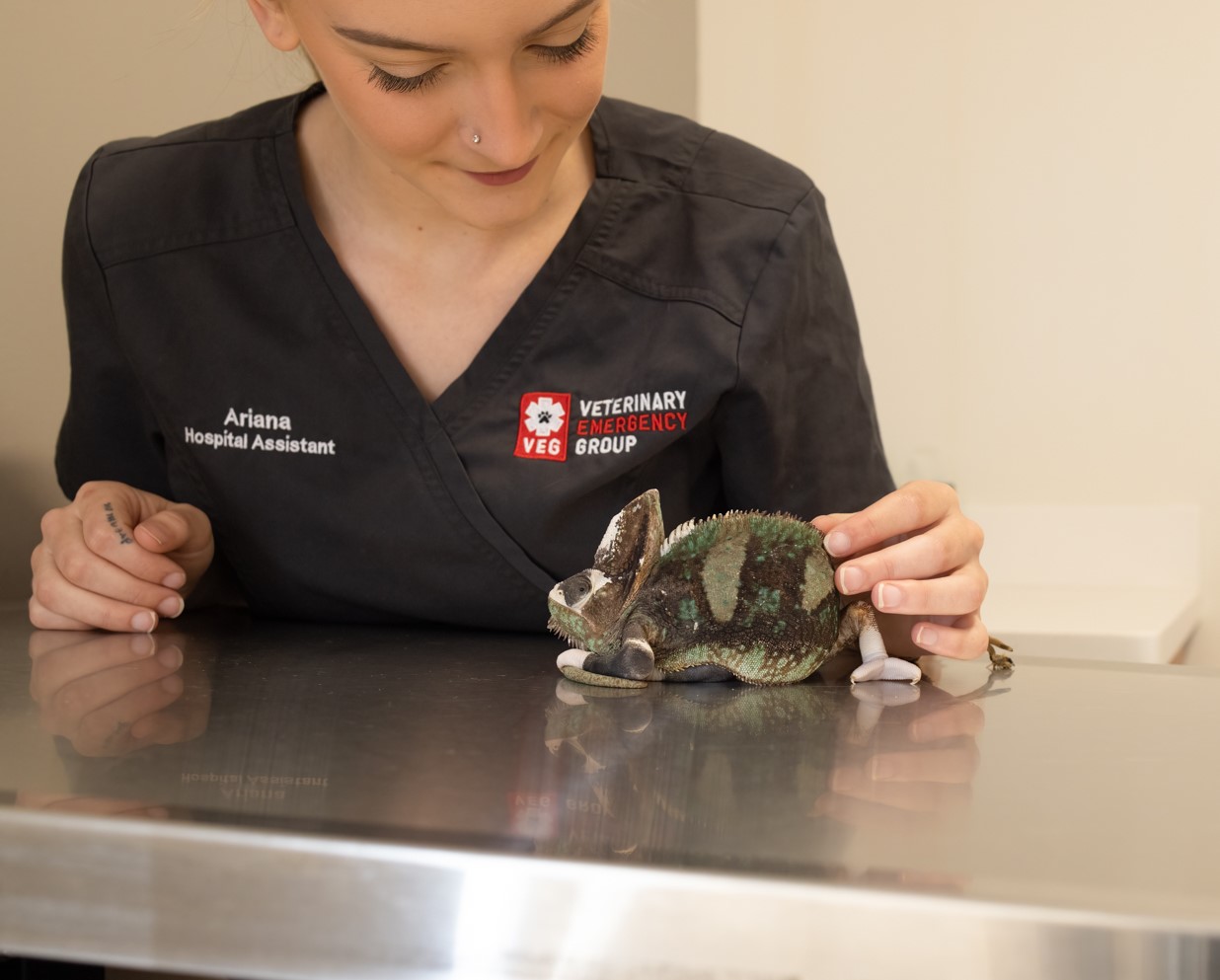
Fractured Bones in Reptiles: Symptoms and Treatment
Dr. Valentina Henao
Call & Speak with a doctor Open 24/7, Even Holidays!
Walk in today for:
Emergencies
Point-of-Care Ultrasound
Urgent Care
X-Rays
Diagnostics + Testing
End-of-Life Care
Surgery
Treatment + Hospitalization
Many people who own other kinds of pets are familiar with the signs and symptoms of broken limbs. However, your reptile pets can also get this kind of injury. Many reptiles each year are injured and have broken bones that need attention. Reptiles can break their tails, legs, pelvis, and even their neck if they should fall or if they are fighting with other reptiles in their enclosure.
Knowing what the symptoms of these kinds of injuries are can help you to make sure that your pet gets the medical care that they need. You do not want your reptile to suffer, and you also want to avoid limbs or body parts that heal incorrectly and lead to lots of other health issues. Being sure that you know what to look for when it comes to broken bones in reptiles is key if you have this kind of pet in your home.
Symptoms
The symptoms of this kind of injury can vary depending on which part of the body is broken. If the tail has been broken, it might just look a bit crooked or strange. In some cases, a broken tail can also lead to issues with balance and motion since the tail can be involved in balance. Broken tails can also cause issues with constipation since the gut can be slowed greatly by issues with the tail.
If the legs are broken, you might be more likely to see this injury right away. Dragging limbs or limbs that look misshapen are commonly broken limbs. If your pet is very lethargic and having trouble getting around, this might also be a sign that they have a broken leg.
Pelvic or neck breaks will usually render the reptile unable to move around at all, which makes these breaks the most noticeable of the possible injuries that can be related to broken bones. In some instances, if the lower part of the body is the only impacted area, the reptile will still be able to get around, but not well.
Treatment
Listed below are the treatment methods for the different types of reptile fractures:
Long Bone Fracture Treatment
Long-bone fractures can often be repaired with splints, but they can also require surgery. In some cases, if the bones are too damaged, the broken leg might just be removed. Plates and pins can be used for reptile repair surgeries, but this is something that many reptile owners do not have the money to provide for their pets.
Large Bone Fracture Treatment
Larger bone breaks usually will not heal without surgical interventions. This is most common in issues with broken necks or pelvic structures. Some animals can heal on their own from these injuries, but it is likely that the reptile will have issues with infection and problems with things like eliminating wastes unless surgery is done.
Broken Tail Treatment
Broken tails might heal on their own and can sometimes be splinted. It can take quite a long time for this kind of break to heal due to the fact that tails can drag along and run into things or get stuck on items in your pet’s cage. You might need to remove all the various leafy and tree-like objects from your pet’s cage until they have healed so that the tail is not damaged further.
The same advice is usually given for all kinds of broken bones in reptiles. Having a clear space for your pet to live in is ideal until the break heals. Reptiles tend to want to hide when they are hurt, but climbing into and over items like this can lead to further injury. It might take a few weeks for your pet to be cleared to be able to have some natural items back in the cage with them again.
Preventing Fractures
These kinds of injuries often happen due to issues with your reptile’s diet. Be sure that your reptiles are getting enough calcium and that you have a UVB light in their living space to avoid issues with vitamin D3 generation. Also, be sure that your reptiles are not fighting and that they cannot get stuck inside anything that you have given them in the habitat, like boxes or hollowed-out spaces.
Contact VEG for Fractured Bones in Reptiles
Fractured bones in reptiles are usually pretty easy to treat. However, if your reptile has sustained a major break, it might take a long time for them to be back to normal. Be sure that you ask all the questions that you need to be answered about the aftercare for this kind of injury, and make sure as well that your reptile is not exposed to risks of falling or fighting with their companions while they are healing.
If you think that your pet might have a more serious illness that is causing broken bones, you need to have your vet do a full workup on your reptile’s health. These conditions are rare, but they do happen to reptiles in some instances.
For more information, or if you would like to speak to an emergency vet, contact VEG by calling one of our locations. Our locations are open 24/7 and our highly skilled teams care for a variety of pet emergencies, including emergencies related to exotic pets.

